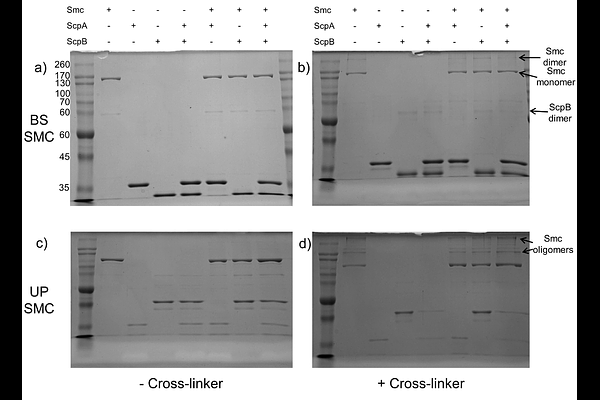Ureaplasma parvum SMC-ScpAB complex is capable of loop extrusion and demonstrates properties that distinguish it from Bacillus subtilis homologue

Ureaplasma parvum SMC-ScpAB complex is capable of loop extrusion and demonstrates properties that distinguish it from Bacillus subtilis homologue
Rumyantseva, N. A.; Sapozhnikova, A. P.; Khasanova, A. A.; Zapryagaeva, E. Y.; Kudryavtseva, M. A.; Morozova, N. E.; Vedyaykin, A.
AbstractStructural Maintenance of Chromosomes (SMC) complexes are present in virtually all organisms and perform a variety of functions associated with maintaining the integrity and spatial organization of DNA. The best-studied SMC complexes are eukaryotic condensins, cohesins, and Smc5/Smc6. It is extremely important that eukaryotic SMC have been shown to exhibit the ability for so-called loop extrusion in vitro, which is the active formation of loops from DNA molecules and is a cosequence of the DNA translocase activity of SMC complexes. For majority of bacterial SMC complexes, including the most widespread Smc-ScpAB complex, loop extrusion has not yet been demonstrated in vitro, although it is in good agreement with the results of in vivo experiments. In this work, we compared the properties of two Smc-ScpAB complexes from different organisms, Bacillus subtilis and Ureaplasma parvum. The results of the work indicate significant differences in the properties of these homologous complexes. In particular, the Smc-ScpAB complex of U. parvum was shown to have the ability to extrude loops, which was not observed for B. subtilis SMC.